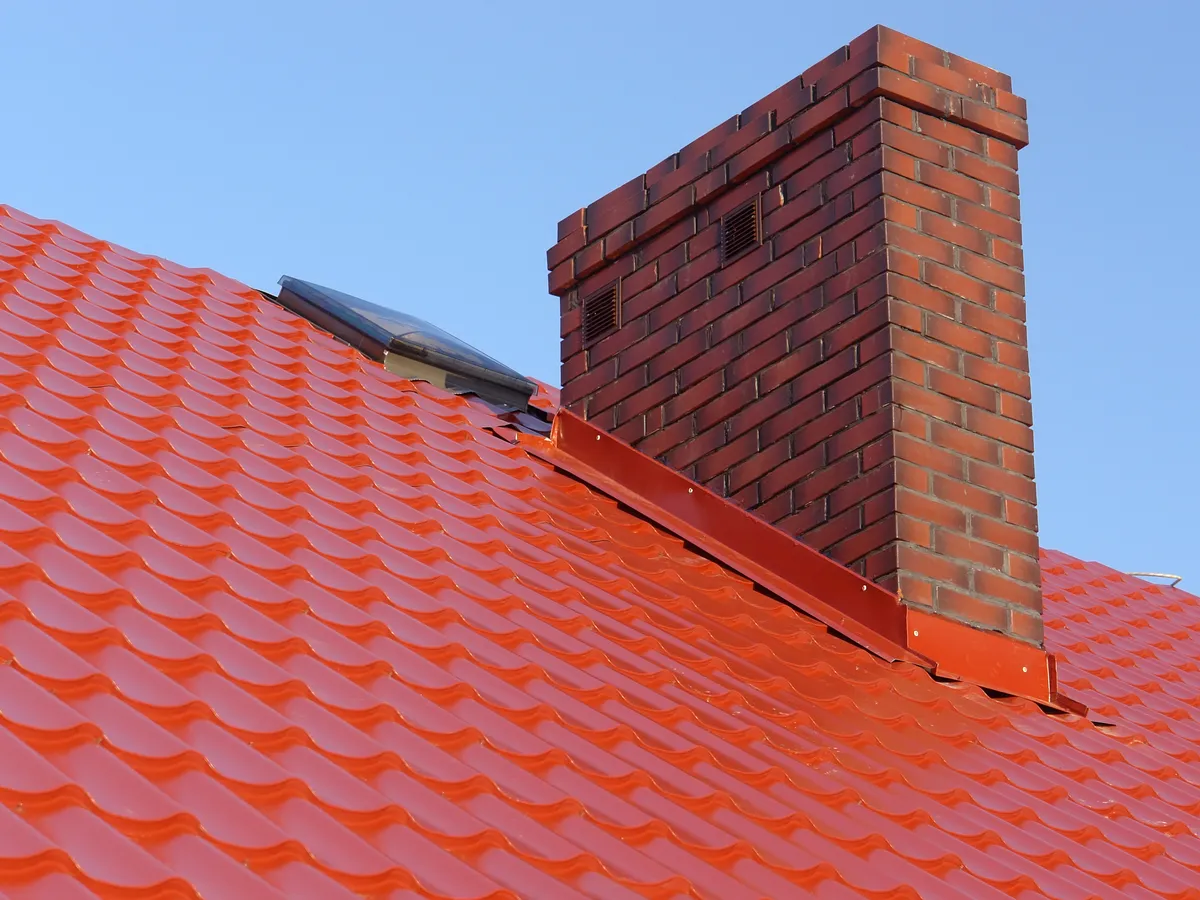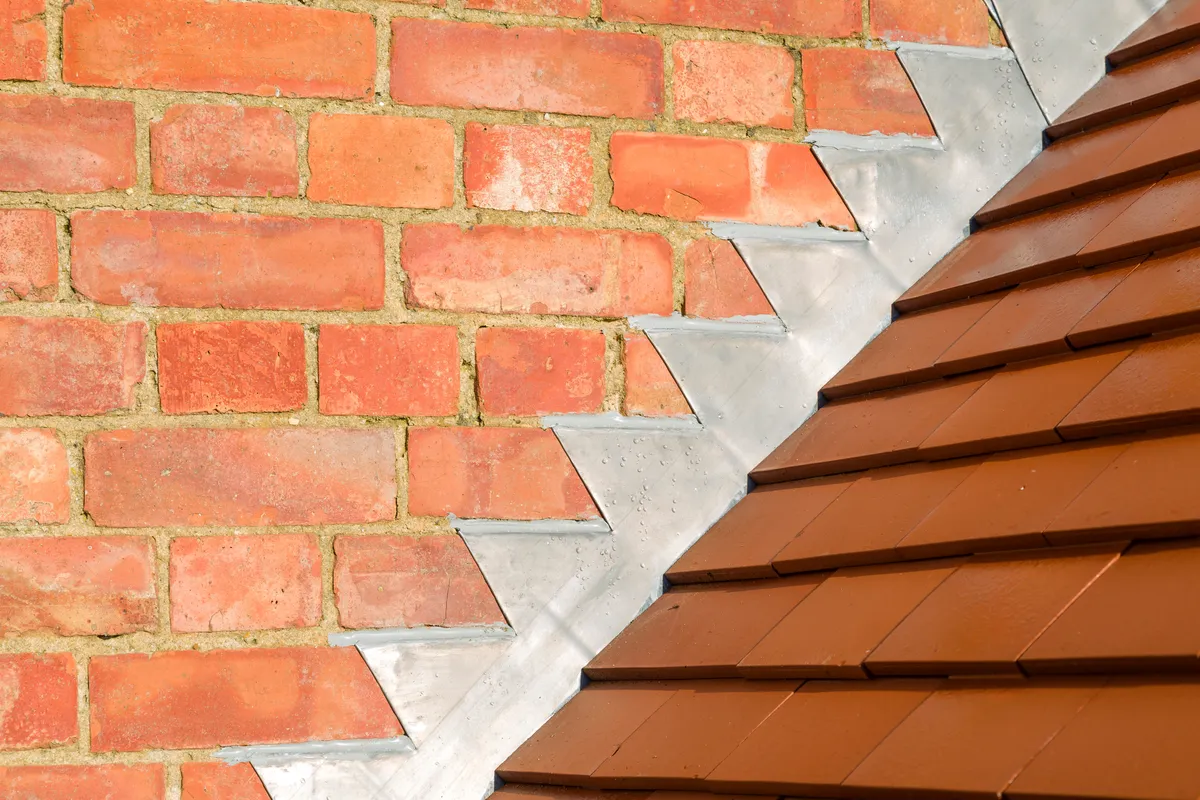What is Roof Flashing and Why It’s Important
To best protect your home, the roof is one of the most critical elements. But have you ever heard of roof flashing? This often-overlooked component plays a vital role in preventing water damage and preserving the structural integrity of your home. In this blog post, we’ll explore what roof flashing is, why it’s important, and how it can benefit homeowners like you, including:
- Understanding Roof Flashing
- Benefits of Roof Flashing
- 5 Types of Roof Flashing
- Signs You Need New Roof Flashing
- How Roof Flashing Protects Different Roof Types
- Working with Professionals for Roof Flashing
Understanding Roof Flashing
Roof flashing is a thin material, usually made of metal, installed at various points on your roof to prevent water from seeping into the structure. It directs water away from critical areas like chimneys, skylights, and vents, ensuring that your home remains dry and damage-free.
Flashing is typically installed wherever the roof intersects with vertical structures, such as walls or dormers. It also covers gaps and joints where different roofing materials meet. By acting as a barrier, flashing helps to protect your roof from leaks and extends its lifespan.
How Roof Flashing Works

The primary function of roof flashing is to channel water away from vulnerable areas on the roof. When it rains, water can pool in certain spots, leading to leaks and potential water damage. Flashing acts as a guide, directing water towards the gutters and downspouts, ensuring efficient drainage.
Flashing is strategically placed at junctions and edges to create a watertight seal. For instance, step flashing is used along the sides of chimneys and walls, while valley flashing is installed in roof valleys to manage the flow of water. This intricate network of flashing components works together to keep your roof watertight.
Common Materials Used for Roof Flashing
Roof flashing can be made from various materials, each with its own set of advantages. The most common materials include:
- Aluminum: Lightweight and easy to work with, aluminum is resistant to rust and corrosion, making it a popular choice for flashing.
- Copper: Known for its durability and longevity, copper flashing can withstand extreme weather conditions and develop a protective patina over time.
- Galvanized Steel: Coated with a layer of zinc, galvanized steel offers excellent protection against rust and is often used in areas with high moisture levels.
- Lead: Highly malleable and long-lasting, lead flashing is commonly used in historic buildings and areas with complex roof structures.
Choosing the right material depends on factors such as climate, budget, and the specific requirements of your roof.
Benefits of Roof Flashing
Roof flashing is essential for maintaining the integrity and longevity of your home. By effectively directing water away from critical areas, it prevents leaks that can lead to extensive water damage and costly repairs. Roof flashing helps to safeguard against mold and mildew growth, ensuring a healthier living environment. This protective barrier also extends the lifespan of roofing materials, ultimately saving homeowners money on replacements and maintenance. Investing in quality roof flashing can enhance your home’s energy efficiency by preventing drafts and maintaining temperature control. Overall, proper installation and maintenance of roof flashing are vital components in protecting your home from the elements.
- Prevents Leaks: Flashing provides a watertight barrier, preventing water from penetrating your roof and causing leaks.
- Extends Roof Lifespan: By directing water away from vulnerable areas, flashing helps to preserve the integrity of your roof, extending its lifespan.
- Protects Structural Integrity: Properly installed flashing safeguards your home’s structure from water damage, mold, and rot.
- Enhances Energy Efficiency: Flashing helps to maintain a stable indoor temperature by preventing drafts and water intrusion, contributing to better energy efficiency.
- Adds Value to Your Home: A well-maintained roof with effective flashing enhances your home’s value and curb appeal.
5 Types of Roof Flashing
Roof flashing is crucial for directing water away from vulnerable areas of a roof, preventing leaks and water damage. Properly installed flashing can significantly extend the lifespan of a roof and maintain the integrity of the structure beneath.
1. Step Flashing
Step flashing is used along the sides of chimneys, walls, and dormers. It consists of small, overlapping pieces of flashing that are installed in a step-like pattern. This design allows water to flow down the roof without penetrating the structure.
Step flashing is particularly effective in areas where the roof meets vertical walls, as it provides a continuous barrier against water intrusion. It is typically made from durable materials like aluminum or galvanized steel.
2. Continuous Flashing
Continuous flashing, also known as apron flashing, is a long piece of metal that covers the joint between a vertical surface and a sloped roof. It is commonly used at the base of chimneys and skylights.
The continuous design ensures that water flows smoothly down the roof, preventing it from pooling at the intersection. Continuous flashing is often used in conjunction with counter flashing for added protection.
3. Drip Edge Flashing
Drip edge flashing is installed along the edges of the roof to direct water away from the fascia and into the gutters. It prevents water from seeping under the shingles and causing rot or damage to the roof deck.
Drip edge flashing is typically made from aluminum or galvanized steel and is available in various shapes and sizes to suit different roof styles. It also helps to maintain the roof’s overall appearance by providing a clean, finished edge.
4. Valley Flashing
Valley flashing is used in roof valleys, where two sloping roof planes intersect. These areas are particularly prone to water accumulation, making effective flashing essential.
Valley flashing is typically a V-shaped or W-shaped metal sheet that channels water down the valley and into the gutters. It is often made from durable materials like copper or galvanized steel to withstand heavy water flow.
5. Counter Flashing
Counter flashing is installed over other types of flashing, such as step flashing or continuous flashing, to provide an additional layer of protection. It is commonly used around chimneys, vents, and skylights.
Counter flashing is designed to overlap the underlying flashing, creating a watertight seal that prevents water from penetrating the roof. It is typically made from durable materials like aluminum or copper.
Signs You Need New Roof Flashing
Recognizing the signs of damaged or deteriorating flashing is crucial for maintaining your roof’s integrity. Here are some common indicators that it’s time to replace your roof flashing:
- Leaks and Water Stains: If you notice water stains on your ceiling or walls, it could be a sign of a flashing issue. Leaks around chimneys, vents, and skylights are common indicators of flashing problems.
- Visible Damage: Inspect your roof for visible damage to the flashing, such as cracks, bends, or corrosion. Damaged flashing can compromise its effectiveness and lead to water intrusion.
- Loose or Missing Flashing: If you find loose or missing pieces of flashing, it’s essential to address the issue promptly. Loose flashing can allow water to seep into the roof and cause damage.
- Aging and Wear: Over time, flashing can deteriorate due to exposure to the elements. If your roof is over 20 years old, it’s a good idea to have the flashing inspected and replaced if necessary.
How Roof Flashing Protects Different Roof Types
Roof flashing is a versatile solution that provides protection for various types of roofs. Here’s how it works with different roof styles:
Shingle Roofs: Flashing is essential for shingle roofs to prevent water from seeping under the shingles and causing damage to the roof deck. It is commonly used around chimneys, vents, and skylights.
Metal Roofs: Metal roofs benefit from flashing to create a watertight seal around joints and intersections. Flashing helps to prevent leaks and maintain the integrity of the roof.
Flat Roofs: Flat roofs require effective flashing to manage water flow and prevent pooling. Flashing is used around parapet walls, roof edges, and penetrations to ensure proper drainage.
Tile Roofs: Tile roofs use flashing to protect vulnerable areas, such as valleys, ridges, and roof edges. Flashing helps to prevent water from infiltrating the roof and causing damage to the tiles and underlayment.
DIY Tips for Roof Flashing Maintenance

Regular maintenance of your roof flashing can help extend its lifespan and prevent costly repairs. Here are some DIY tips for maintaining your roof flashing:
- Regular Inspections: Conduct regular inspections of your roof flashing, especially after severe weather events. Look for signs of damage, corrosion, or loose flashing.
- Clean Debris: Keep the areas around your flashing free of debris, such as leaves and branches. Debris can trap moisture and accelerate the deterioration of your flashing.
- Seal Gaps and Cracks: Use roofing cement or caulk to seal any gaps or cracks in your flashing. This will help prevent water from seeping into the roof.
- Trim Overhanging Branches: Trim any overhanging branches that could potentially damage your roof flashing during storms or high winds.
- Replace Damaged Flashing: If you notice any damaged or deteriorating flashing, replace it promptly to prevent water intrusion and further damage.
Working with Professionals for Roof Flashing
While DIY maintenance is essential, working with professional roofing contractors ensures that your roof flashing is installed correctly and effectively. Here are some reasons to consider hiring professionals for your roof flashing needs:
Expertise and Experience: Professional roofing contractors have the knowledge and experience to install flashing properly, ensuring a watertight seal and long-lasting protection.
Quality Materials: Professionals use high-quality materials that are durable and designed for specific roofing applications. They can recommend the best materials for your roof type and climate.
Efficient Installation: Hiring professionals ensure that the flashing is installed efficiently and correctly, reducing the risk of leaks and water damage.
Warranty and Support: Many professional roofing contractors offer warranties on their work, providing peace of mind and protection for your investment.
Protecting Your Home with Expert Roofing Services
Roof flashing is a critical component of any roofing system, providing essential protection against water intrusion and damage. By understanding the importance of roof flashing and investing in quality materials and installation, homeowners can ensure the longevity and integrity of their roofs.
At Shamrock Roofing and Construction, we take pride in our expertise and commitment to providing top-notch roofing services. With over 49 years of experience, we are the team you can trust for all your home exterior and roofing needs. Whether you need roof repair, installation, or maintenance, our skilled professionals are here to help.
Ready to protect your home with quality roof flashing? Contact us today to schedule a free roof inspection and learn more about our services.
